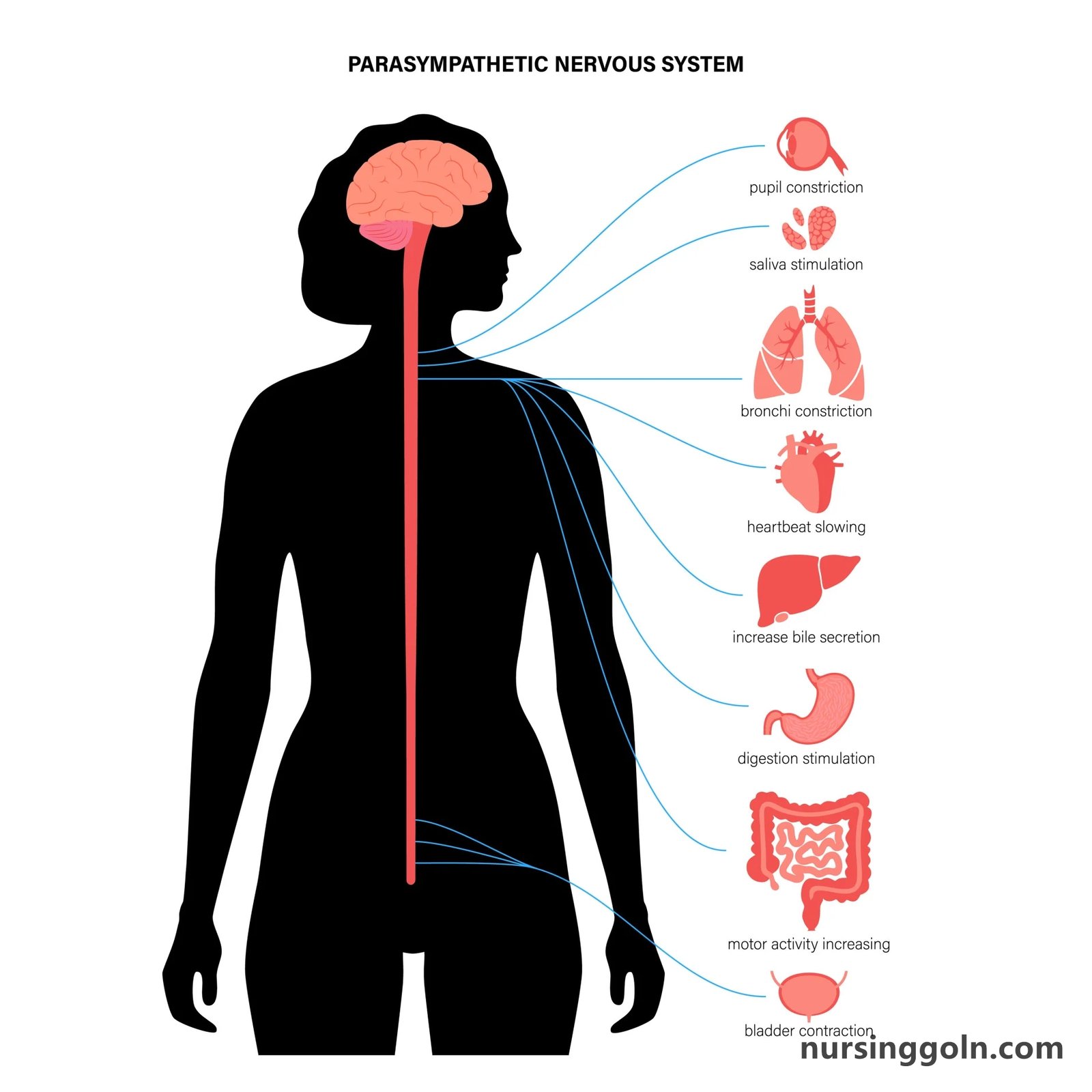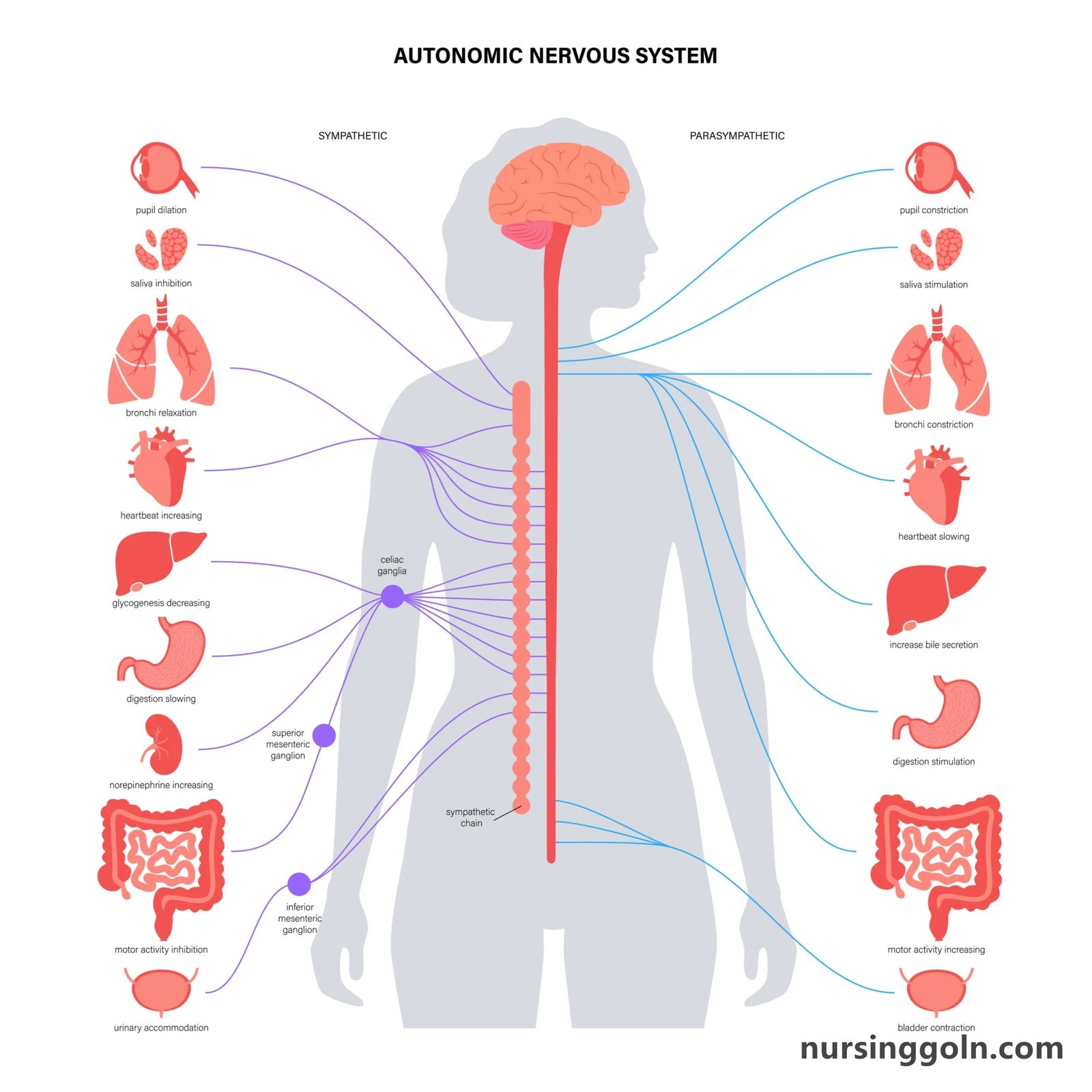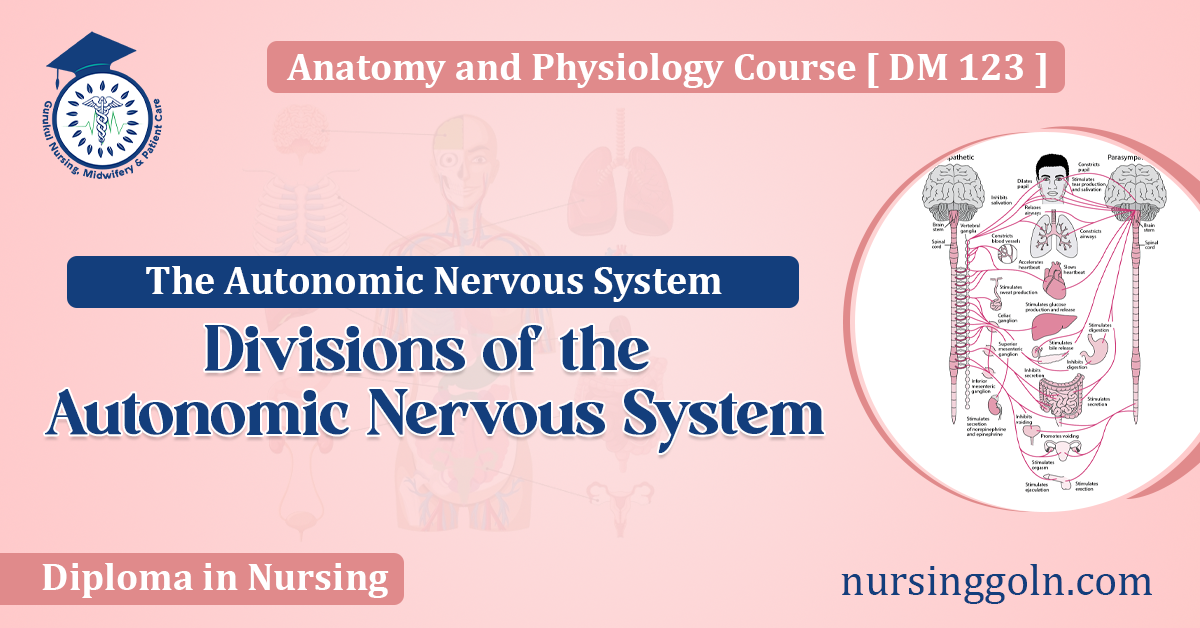Today our topic of discussion is ” Divisions of the Autonomic Nervous System “. The human body is a well-coordinated machine, seamlessly executing countless functions without our conscious command. Many of these functions are governed by the autonomic nervous system (ANS), an unsung hero ensuring our internal environment remains stable. This article sheds light on the divisions of the ANS, underscoring the intricate equilibrium it maintains within us.

Divisions of the Autonomic Nervous System: The Autonomic Nervous System
1. Introduction: The Role of the Autonomic Nervous System
The ANS, part of the peripheral nervous system, regulates involuntary physiological responses. It oversees various organs, blood vessels, and glands, managing processes like heartbeat, digestion, and respiratory rate. This system operates in the background, always adjusting to keep us at equilibrium.
2. Two Halves of a Whole: Sympathetic and Parasympathetic
The ANS is bifurcated into two main divisions:
- Sympathetic Nervous System (SNS): Often dubbed the ‘fight or flight’ system, the SNS prepares the body to respond to perceived threats.
- Parasympathetic Nervous System (PNS): Known as the ‘rest and digest’ system, the PNS calms the body, conserving energy, and overseeing restorative processes.

3. The Sympathetic Nervous System: Ready for Action
The SNS is an emergency response system. When activated:
- Heart Rate and Blood Pressure Increase: To rapidly deliver oxygen and nutrients to vital organs.
- Pupils Dilate: Enhancing vision clarity.
- Digestion Slows: Redirecting energy to muscles.
- Adrenal Glands Release Adrenaline: Amplifying the body’s alertness and readiness.
4. The Parasympathetic Nervous System: Calm and Controlled
In contrast, the PNS promotes relaxation:
- Heart Rate and Blood Pressure Decrease: Conserving energy.
- Pupils Constrict: Normalizing vision.
- Digestion Activates: Nutrients are absorbed and waste processed.
- Energy is Stored: As glycogen in the liver for future use.

5. Anatomy and Pathways
Both SNS and PNS have distinct anatomical pathways:
- SNS: Neurons emerge from the thoracic and lumbar regions of the spinal cord. It utilizes shorter pre-ganglionic and longer post-ganglionic neurons.
- PNS: Neurons originate from the brainstem and sacral region of the spinal cord. Generally, it has longer pre-ganglionic and shorter post-ganglionic neurons.
6. Neurotransmitters and Receptors
Different neurotransmitters mediate the effects of the SNS and PNS:
- SNS: Primarily employs noradrenaline (norepinephrine) acting on adrenergic receptors.
- PNS: Uses acetylcholine as its main neurotransmitter, influencing muscarinic and nicotinic receptors.
7. Enteric Nervous System: The Third Player
Sometimes considered a part of the ANS, the enteric nervous system governs the gastrointestinal tract. While it can operate independently, it often interacts with the SNS and PNS, ensuring optimal digestive function.
8. Balancing Act: Sympathetic and Parasympathetic Collaboration
These systems don’t operate in isolation. They constantly interact, maintaining a state of dynamic balance termed ‘homeostasis.’ For instance, during exercise, the SNS increases heart rate, while post-exercise, the PNS dominates to lower it.

9. Disorders of the Autonomic Nervous System
Dysfunction within the ANS can lead to various conditions:
- Postural Orthostatic Tachycardia Syndrome (POTS): Characterized by increased heart rate upon standing.
- Multiple System Atrophy: A progressive neurodegenerative disorder affecting autonomic functions.
- Autonomic Neuropathy: Often a complication of other conditions like diabetes, where nerve damage impairs ANS function.
10. The Future of Autonomic Research
Current research delves into ways to modulate ANS activity for therapeutic purposes. Biofeedback, deep brain stimulation, and pharmaceutical interventions show promise in refining our control over the ANS, potentially offering novel treatments for various conditions.

11. Conclusion: Celebrating the Silent Workhorse
While the autonomic nervous system might operate behind the scenes, its impact on our well-being is monumental. The synergistic dance between the sympathetic and parasympathetic divisions ensures we can face challenges and then recover and rejuvenate. By understanding this intricate system, we not only appreciate the sophistication of our bodies but also envision novel ways to enhance human health and longevity.
Read more:
